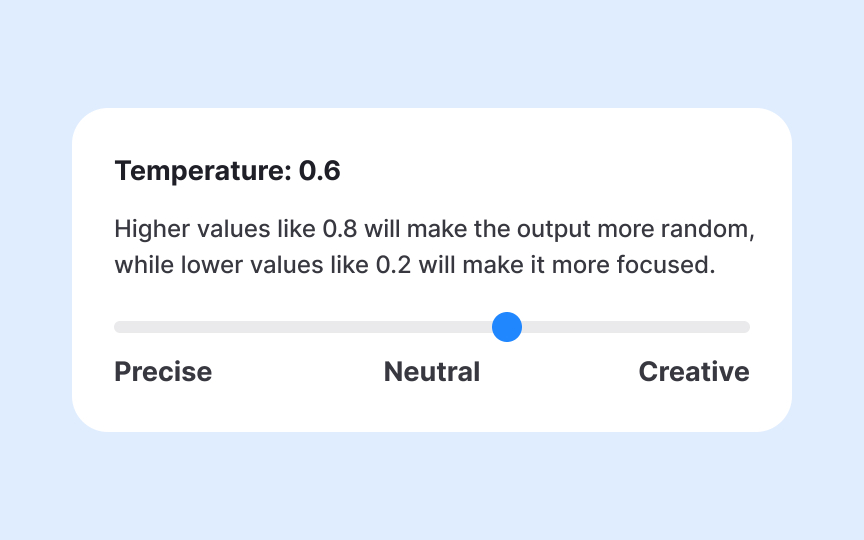Setting realistic AI expectations
AI capabilities vary dramatically across task types, making appropriate expectations crucial for satisfaction. Tasks involving pattern recognition, format transformation, and creative variations typically yield excellent results. AI excels at generating alternatives, summarizing content, and adapting tone or style. These strengths stem from its training on diverse text examples. Conversely, tasks requiring perfect accuracy, real-time information, or deep reasoning often disappoint. Mathematical calculations need verification. Current event summaries may contain outdated information. Complex logical proofs might include subtle errors. Recognizing these limitations prevents frustration and guides task allocation. Many AI tools allow you to adjust a setting called "temperature" that controls output creativity versus consistency. Think of it as adjusting how adventurous the AI should be with its responses:
- Low temperature makes AI stick closely to the most probable responses, like choosing your favorite dish every time. For business emails, you want low temperature for consistency.
- High temperature encourages more varied and unexpected outputs, like trying something completely new. For brainstorming sessions, higher temperature sparks more creative ideas.[1]
In ChatGPT, you can request different temperatures by adding instructions like "provide a creative response (temperature 0.8)" or "give me a focused, factual answer (temperature 0.1)." The scale typically runs from 0 to 1, where 0 produces the most predictable responses and 1 allows maximum creativity.
Pro Tip: Look for temperature or creativity sliders in AI tool settings. Start with defaults, then adjust based on whether you need reliability or innovation.

